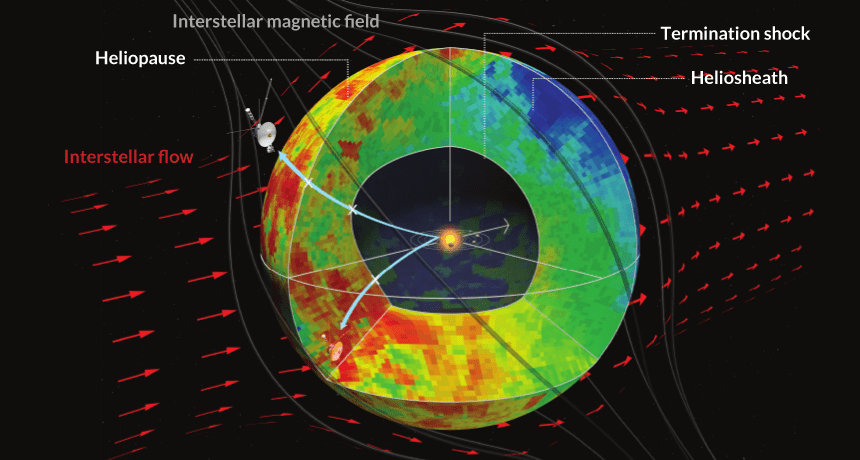No long, twisted tail trails the solar system
Bubble inflated by particles from the sun is spherical, not comet-shaped, study shows

A TALE OF NO TAIL Data from the Voyager and Cassini spacecraft suggest that the heliosphere, the bubble of particles surrounding the solar system, is spherical, not comet-shaped. This illustration shows how that bubble is shaped by the interstellar magnetic field and flow of particles from interstellar space. Other labeled parts of the heliosphere are its outer edge (heliopause), the point at which the solar wind slows in speed (termination shock) and the region between those two boundaries (heliosheath).
K. Dialynas et al/Nature Astronomy 2017







